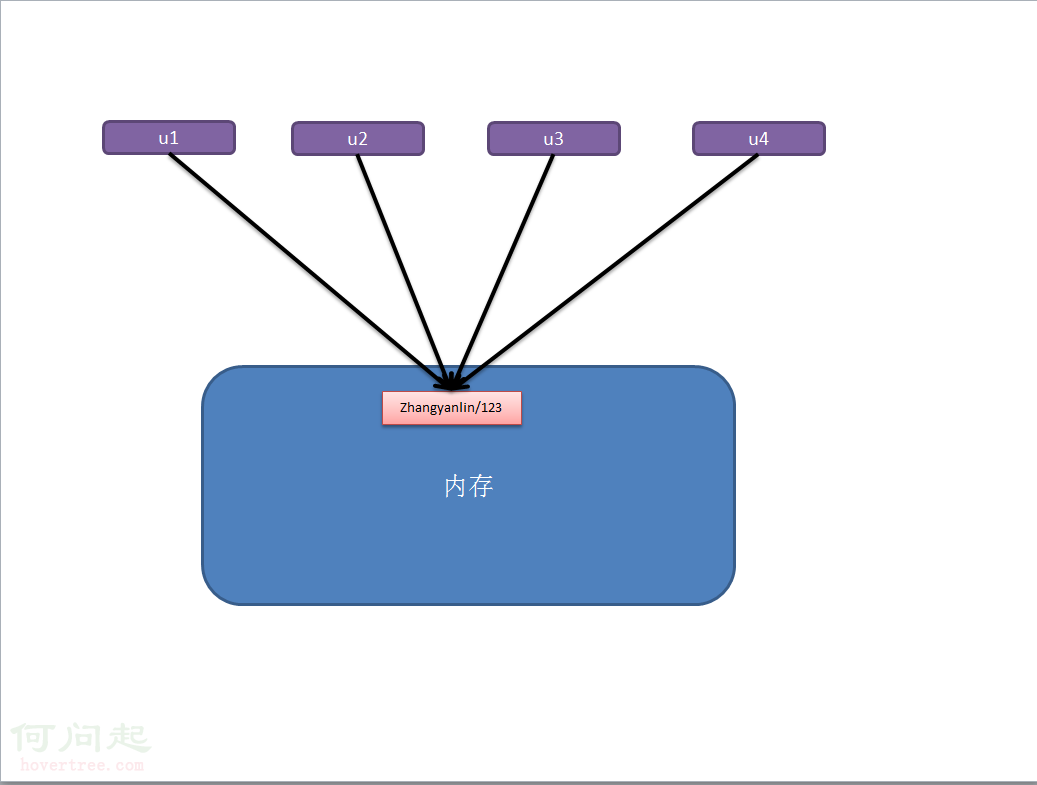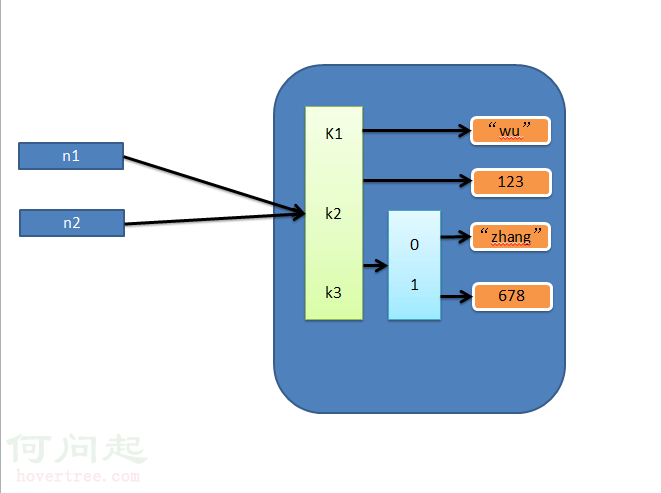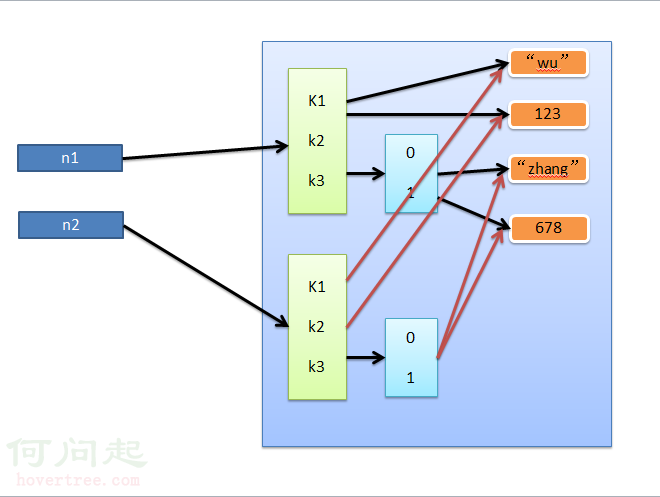a、set集合,是一個無序且不重復的元素集合


class set(object):
"""
set() -> new empty set object
set(iterable) -> new set object
Build an unordered collection of unique elements.
"""
def add(self, *args, **kwargs): # real signature unknown
"""
Add an element to a set,添加元素
This has no effect if the element is already present.
"""
pass
def clear(self, *args, **kwargs): # real signature unknown
""" Remove all elements from this set. 清楚內容"""
pass
def copy(self, *args, **kwargs): # real signature unknown
""" Return a shallow copy of a set. 淺拷貝 """
pass
def difference(self, *args, **kwargs): # real signature unknown
"""
Return the difference of two or more sets as a new set. A中存在,B中不存在
(i.e. all elements that are in this set but not the others.)
"""
pass
def difference_update(self, *args, **kwargs): # real signature unknown
""" Remove all elements of another set from this set. 從當前集合中刪除和B中相同的元素"""
pass
def discard(self, *args, **kwargs): # real signature unknown
"""
Remove an element from a set if it is a member.
If the element is not a member, do nothing. 移除指定元素,不存在不保錯
"""
pass
def intersection(self, *args, **kwargs): # real signature unknown
"""
Return the intersection of two sets as a new set. 交集
(i.e. all elements that are in both sets.)
"""
pass
def intersection_update(self, *args, **kwargs): # real signature unknown
""" Update a set with the intersection of itself and another. 取交集並更更新到A中 """
pass
def isdisjoint(self, *args, **kwargs): # real signature unknown
""" Return True if two sets have a null intersection. 如果沒有交集,返回True,否則返回False"""
pass
def issubset(self, *args, **kwargs): # real signature unknown
""" Report whether another set contains this set. 是否是子序列"""
pass
def issuperset(self, *args, **kwargs): # real signature unknown
""" Report whether this set contains another set. 是否是父序列"""
pass
def pop(self, *args, **kwargs): # real signature unknown
"""
Remove and return an arbitrary set element.
Raises KeyError if the set is empty. 移除元素
"""
pass
def remove(self, *args, **kwargs): # real signature unknown
"""
Remove an element from a set; it must be a member.
If the element is not a member, raise a KeyError. 移除指定元素,不存在保錯
"""
pass
def symmetric_difference(self, *args, **kwargs): # real signature unknown
"""
Return the symmetric difference of two sets as a new set. 對稱交集
(i.e. all elements that are in exactly one of the sets.)
"""
pass
def symmetric_difference_update(self, *args, **kwargs): # real signature unknown
""" Update a set with the symmetric difference of itself and another. 對稱交集,並更新到a中 """
pass
def union(self, *args, **kwargs): # real signature unknown
"""
Return the union of sets as a new set. 並集
(i.e. all elements that are in either set.)
"""
pass
def update(self, *args, **kwargs): # real signature unknown
""" Update a set with the union of itself and others. 更新 """
pass
set
b、數據類型模塊舉例
se = {11,22,33,44,55}
be = {44,55,66,77,88}
# se.add(66)
# print(se) #添加元素,不能直接打印!
#
#
#
# se.clear()
# print(se) #清除se集合裡面所有的值,不能清除單個
#
#
#
# ce=be.difference(se) #se中存在,be中不存在的值,必須賦值給一個新的變量
# print(ce)
#
#
# se.difference_update(be)
# print(se) #在se中刪除和be相同的值,不能賦值給一個新的變量,先輸入轉換,然後打印,也不能直接打印!
# se.discard(11)
# print(se) #移除指定元素,移除不存在的時候,不會報錯
# se.remove(11)
# print(se) #移除指定的元素,移除不存在的會報錯
# se.pop()
# print(se) #移除隨機的元素
#
#
# ret=se.pop()
# print(ret) #移除元素,並且可以把移除的元素賦值給另一個變量
# ce = se.intersection(be)
# print(ce) #取出兩個集合的交集(相同的元素)
# se.intersection_update(be)
# print(se) #取出兩個集合的交集,並更新到se集合中
# ret = se.isdisjoint(be)
# print(ret) #判斷兩個集合之間又沒有交集,如果有交集返回False,沒有返回True
# ret=se.issubset(be)
# print(ret) #判斷se是否是be集合的子序列,如果是返回True,不是返回Flase
# ret = se.issuperset(be)
# print(ret) #判斷se是不是be集合的父序列,如果是返回True,不是返回Flase
# ret=se.symmetric_difference(be)
# print(ret) #對稱交集,取出除了不相同的元素
# se.symmetric_difference_update(be)
# print(se) #對稱交集,取出不相同的元素並更新到se集合中
# ret = se.union(be)
# print(ret) #並集,把兩個元素集合並在一個新的變量中
2、深淺拷貝
a、數字和字符串
對於 數字 和 字符串 而言,賦值、淺拷貝和深拷貝無意義,因為其永遠指向同一個內存地址。
import copy # ######### 數字、字符串 ######### n1 = 123 # n1 = "i am alex age 10" print(id(n1)) # ## 賦值 ## n2 = n1 print(id(n2)) # ## 淺拷貝 ## n2 = copy.copy(n1) print(id(n2)) # ## 深拷貝 ## n3 = copy.deepcopy(n1) print(id(n3))

b、其他基本數據類型
對於字典、元祖、列表 而言,進行賦值、淺拷貝和深拷貝時,其內存地址的變化是不同的。
1、賦值
賦值,只是創建一個變量,該變量指向原來內存地址,如:
n1 = {"k1": "zhangyanlin", "k2": 123, "k3": ["Aylin", 456]}
n2 = n1

2、淺拷貝
淺拷貝,在內存中只額外創建第一層數據
import copy
n1 = {"k1": "zhangyanlin", "k2": 123, "k3": ["aylin", 456]}
n3 = copy.copy(n1)
3、深拷貝
深拷貝,在內存中將所有的數據重新創建一份(排除最後一層,即:python內部對字符串和數字的優化)

.函數的定義主要有如下要點:
1、返回值
函數是一個功能塊,該功能到底執行成功與否,需要通過返回值來告知調用者。
以上要點中,比較重要有參數和返回值:
def 發送短信():
發送短信的代碼...
if 發送成功:
return True
else:
return False
while True:
# 每次執行發送短信函數,都會將返回值自動賦值給result
# 之後,可以根據result來寫日志,或重發等操作
result = 發送短信()
if result == False:
短信發送失敗...
函數的有三中不同的參數:
# ######### 定義函數 #########
# name 叫做函數func的形式參數,簡稱:形參
def func(name):
print name
# ######### 執行函數 #########
# 'zhangyanlin' 叫做函數func的實際參數,簡稱:實參
func('zhangyanlin')
def func(name, age = 18):
print "%s:%s" %(name,age)
# 指定參數
func('zhangyanlin', 19)
# 使用默認參數
func('nick')
注:默認參數需要放在參數列表最後
def func(*args):
print args
# 執行方式一
func(11,33,4,4454,5)
# 執行方式二
li = [11,2,2,3,3,4,54]
func(*li)
def func(**kwargs):
print args
# 執行方式一
func(name='wupeiqi',age=18)
# 執行方式二
li = {'name':'wupeiqi', age:18, 'gender':'male'}
func(**li)
def func(*args, **kwargs):
print args
print kwargs
郵件實例:
def email(p,j,k):
import smtplib
from email.mime.text import MIMEText
from email.utils import formataddr
set = True
try:
msg = MIMEText('j', 'plain', 'utf-8') #j 郵件內容
msg['From'] = formataddr(["武沛齊",'[email protected]'])
msg['To'] = formataddr(["走人",'[email protected]'])
msg['Subject'] = "k" #k主題
server = smtplib.SMTP("smtp.126.com", 25)
server.login("[email protected]", "WW.3945.59")
server.sendmail('[email protected]', [p], msg.as_string())
server.quit()
except:
set = False
return True
formmail = input("請你輸入收件人郵箱:")
zhuti = input("請您輸入郵件主題:")
neirong = input("請您輸入郵件內容:")
aa=email(formmail,neirong,zhuti)
if aa:
print("郵件發送成功!")
else:
print("郵件發送失敗!")